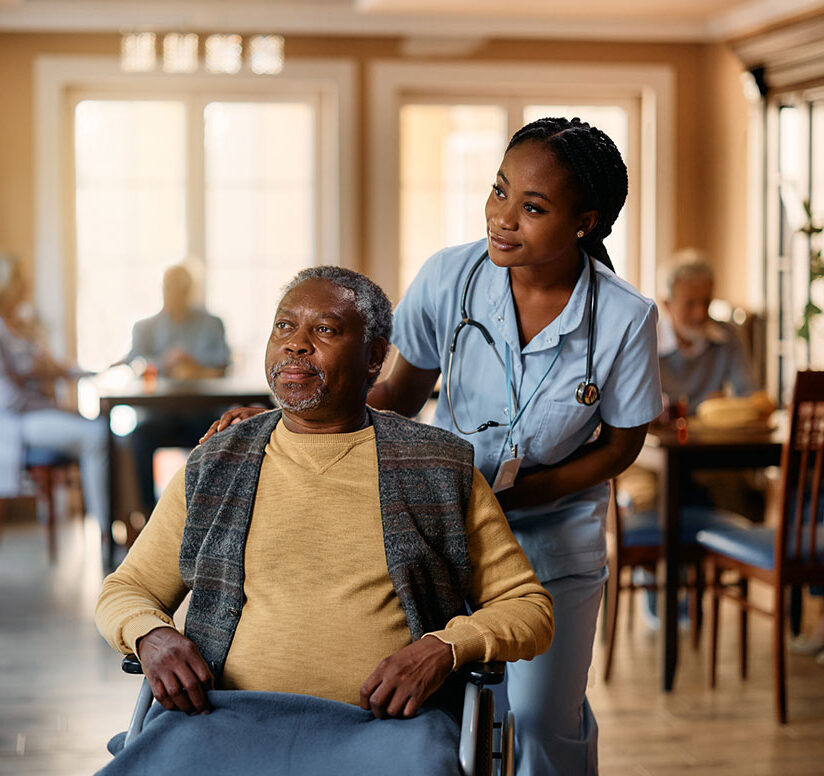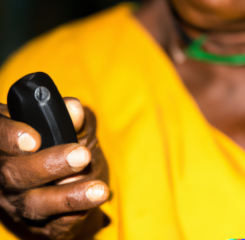Coding Risk for Pressure Ulcers on the MDS: M0100 and M0150
M0100: Determination of Pressure Ulcer/InjuryRisk
This is the first item in Section M, Skin Conditions and it simply requires checking all boxes that apply in the seven-day look-back period. The choices are:
- Resident has a stage 1 or greater, a scar over a bony prominence, or a non-removable dressing/device.
- Formal assessment tool (e.g. Braden, Norton, or other).
- Clinical assessment.
- None of the above.
Steps for Assessment
- Review the medical record, including skin care flow sheets or other skin tracking forms, nurses’ notes, and pressure ulcer/injury risk assessments.
- Speak with the treatment nurse and direct care staff on all shifts to confirm conclusions from the medical record review and observations of the resident.
- Examine the resident and determine whether any ulcers, scars, or non-removable dressings/devices are present. Assess key areas for pressure ulcer/injury development (e.g., sacrum, coccyx, trochanters, ischial tuberosities, and heels). Also assess bony prominences (e.g., elbows and ankles) and skin that is under braces or subjected to pressure (e.g., ears from oxygen tubing).
- Coders are often frustrated when the clinical documentation for the lookback has conflicting information or the information is not present at all. It is crucial to understand that coding is not simply a data entry position. Each item on the first has ‘steps for assessment,’ then lists coding instructions. The steps for assessment of pressure ulcer/injury risk require a thorough documentation review, interviews with other clinicians with information about the resident’s skin condition and a hands-on examination of the resident’s skin. If the clinical documentation is accurate and complete in the look-back period, the hands-on assessment would not be necessary because another clinical team member performed that assessment. The key to prevention is being able to identify resident-specific risk factors and mitigate them when possible.
The RAI Manual definition of pressure ulcer/injuryrisk factor is below:
PRESSURE ULCER/INJURYRISK FACTOR
Examples of risk factors include immobility and decreased functional ability; co-morbid conditions such as end-stage renal disease, thyroid disease, or diabetes; drugs such as steroids; impaired diffuse or localized blood flow; resident refusal of care and treatment; cognitive impairment; exposure of skin to urinary and fecal incontinence; undernutrition, malnutrition, and hydration deficits; and a healed ulcer.
F-686 is where deficient practice related to pressure ulcers is cited. The guidance to surveyors has an expanded discussion of pressure ulcer/injuryrisk factors that must be taken into account. It is often useful for an MDS coder to have the RAI manual and the applicable F-tag regulations and guidance when assessing for pressure ulcer/injuryrisk. From F-686, Appendix PP, State Operations Manual:
Risk Factors
Not all risk factors are fully modifiable or can be completely addressed. Some risk factors, such as a permanent lack of sensation to an area, may not be modifiable. Some potentially modifiable risk factors, such as malnutrition or uncontrolled blood sugars, may take time to correct, despite prompt intervention. Other risk factors, such as pressure, can be modified promptly. Many studies and professional literature identify risk factors that increase a resident’s susceptibility to develop or to not heal pressure PU/PIs.
Examples of these risk factors include, but are not limited to:
- Impaired/decreased mobility and decreased functional ability.
- Co-morbid conditions, such as end stage renal disease, thyroid disease or diabetes mellitus.
- Drugs such as steroids that may affect healing.
- Impaired diffuse or localized blood flow, for example, generalized atherosclerosis or lower extremity arterial insufficiency.
- Resident refusal of some aspects of care and treatment.
- Cognitive impairment.
- Exposure of skin to urinary and fecal incontinence.
- Under nutrition, malnutrition, and hydration deficits.
- The presence of a previously healed PU/PI. The history of any healed PU/PI, its origin, treatment, its stages [if known] is important assessment information since areas of healed Stage 3 or 4 PU/PIs are more likely to have a recurrent breakdown.
Although the requirements do not mandate the use of any specific assessment tool (other than the RAI), many validated instruments are available to aid in assessing the risk for developing PU/PIs. It is important to keep in mind that research has shown that in a skilled nursing facility, 80 percent of PU/PIs develop within two weeks of admission and 96 percent develop within three weeks of admission. (Reference: Lyder CH, Ayello EA. Pressure Ulcers: A Patient Safety Issue. In: Hughes RG, editor. Patient Safety and Quality: An Evidence-Based Handbook for Nurses. Rockville (MD): Agency for Healthcare Research and Quality (US); 2008 Apr. Chapter 12.)
Many clinicians utilize a standardized pressure ulcer/injury risk assessment tool to assess a resident’s PU/PI risks upon admission, weekly for the first four weeks after admission, then monthly or whenever there is a change in the resident’s condition.
A resident’s risk may increase due to an acute illness or condition change (e.g., upper respiratory infection, pneumonia, or exacerbation of underlying congestive heart failure) and may require additional evaluation. The frequency of assessment should be based upon each resident’s specific needs.
Regardless of any resident’s total risk score on an assessment tool, clinicians are responsible for evaluating each existing and potential risk factor for developing a pressure injury and determining the resident’s overall risk. It is acceptable if the clinician’s assessment places the resident at a higher risk level than the overall score of the assessment tool based on assessment factors that are not captured by the tool. Documentation of the clinician’s decision should be placed in the medical record.
After a thorough assessment, the coding instructions for M0100 are fairly straightforward. Remember, to check the box, the item had to have occurred in the seven-day lookback period.
Coding Instructions
For this item, check all that apply:
- Check A if resident has a Stage 1 or greater pressure ulcer/injury, a scar over a bony prominence, or a non-removable dressing/ device. Review descriptions of pressure ulcer/injury stages and information obtained during physical examination and medical record review. Examples of non- removable dressings/devices include a primary surgical dressing, a cast, or a brace.
- Check B if a formal assessment has been completed. An example of an established pressure ulcer/injuryrisk tool is the Braden Scale for Predicting Pressure Sore Risk©. Other tools may be used.
- Check C if the resident’s risk for pressure ulcer/injury development is based on clinical assessment. A clinical assessment could include a head-to-toe physical examination of the skin and observation or medical record review of pressure ulcer/injury risk factors. Examples of risk factors include the following:
- Impaired/decreased mobility and decreased functional ability.
- Co-morbid conditions, such as end-stage renal disease, thyroid disease, or diabetes mellitus.
- Drugs, such as steroids, that may affect wound healing.
- Impaired difuse or localized blood flow (e.g., generalized atherosclerosis or lower extremity arterial insufficiency).
- Resident refusal of some aspects of care and treatment.
- Cognitive impairment;urinary and fecal incontinence.
- Undernutrition, malnutrition, and hydration deficits.
- Healed pressure ulcers, especially Stage 3 or 4 which are more likely to have recurrent breakdown.
- Check Z if none of the above apply.
The next item, M0150 is a “yes or no” question: Is the resident at risk of developing a pressure ulcer?
Steps for Assessment
Based on the item(s) reviewed for M0100, determine if the resident is at risk for developing a pressure ulcer.
- If the medical record reveals that the resident currently has a Stage 1 or greater pressure ulcer, a scar over a bony prominence, or a non-removable dressing or device, the resident is at risk for worsening or new pressure ulcers.
- Review formal risk assessment tools to determine the resident’s “risk score.”
- Review the components of the clinical assessment conducted for evidence of pressure ulcer/injuryrisk.
The task in these two MDS items is to thoroughly assess each resident’s unique risk and develop a care plan to minimize those risks. The care process should include efforts to stabilize, reduce, or remove underlying risk factors; to monitor the impact of the interventions; and to modify the interventions as appropriate.

Most Recommended
February 29, 2024
Say Yes to Lobby Day!
April 05, 2024
Cyberattack Updates: Change Healthcare Payment Platform
April 22, 2024
 Nursing Home Staffing Ratios: LeadingAge Is On the Case
Nursing Home Staffing Ratios: LeadingAge Is On the Case
March 27, 2024
 Colleagues on the Move, March 27, 2024
Colleagues on the Move, March 27, 2024
April 12, 2024
Improving Medicare Advantage
Recently Added
April 24, 2024
 Colleagues on the Move, April 24, 2024
Colleagues on the Move, April 24, 2024
April 22, 2024
CAST Safety Technology Selection Tool Updated
April 22, 2024
CAST Members in the News
April 22, 2024



